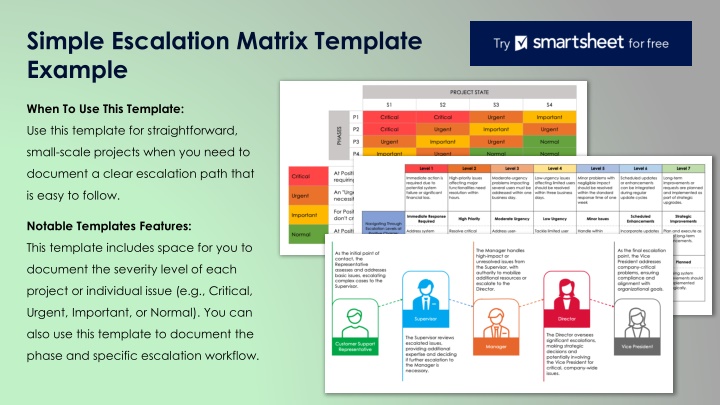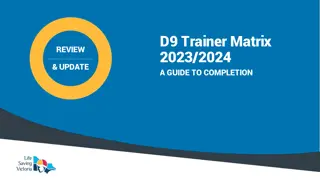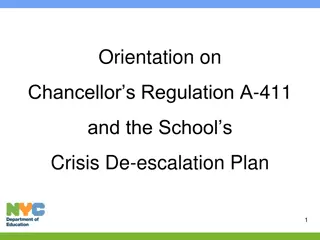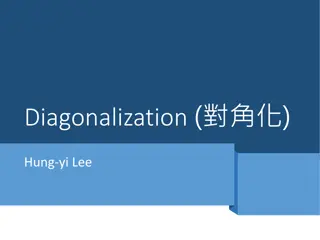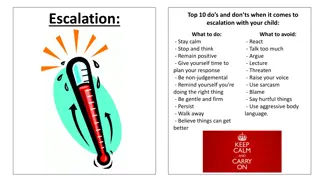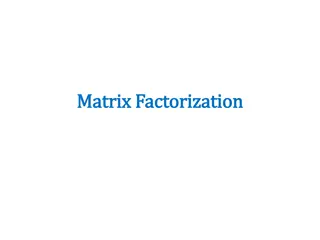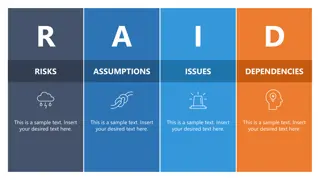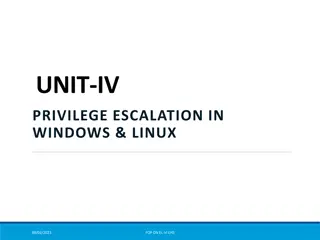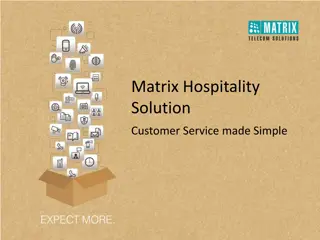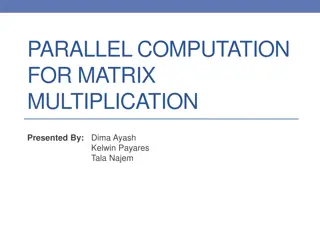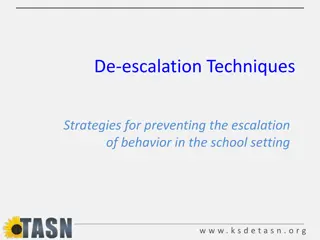Simple Escalation Matrix Template
"Use this template for straightforward, small-scale projects to document a clear escalation path. Includes severity levels, escalation workflow, and examples of Critical, Urgent, Important, and Normal issues."
Download Presentation

Please find below an Image/Link to download the presentation.
The content on the website is provided AS IS for your information and personal use only. It may not be sold, licensed, or shared on other websites without obtaining consent from the author.If you encounter any issues during the download, it is possible that the publisher has removed the file from their server.
You are allowed to download the files provided on this website for personal or commercial use, subject to the condition that they are used lawfully. All files are the property of their respective owners.
The content on the website is provided AS IS for your information and personal use only. It may not be sold, licensed, or shared on other websites without obtaining consent from the author.
E N D
Presentation Transcript
Simple Escalation Matrix Template Example When To Use This Template: Use this template for straightforward, small-scale projects when you need to document a clear escalation path that is easy to follow. Notable Templates Features: This template includes space for you to document the severity level of each project or individual issue (e.g., Critical, Urgent, Important, or Normal). You can also use this template to document the phase and specific escalation workflow.
Simple Escalation Matrix Example You can edit this text, customize it with your escalation process details, and change the font or style. PROJECT STATE S1 S2 S3 S4 P1 Critical Critical Urgent Important P2 Critical Urgent Important Urgent PHASES P3 Urgent Important Urgent Normal P4 Important Urgent Normal Normal At Positive Charge, a "Critical" escalation presents immediate risk to system operations, requiring urgent attention to prevent extensive downtime. Critical An "Urgent" stage at Positive Charge indicates significant impact on functionality or service, necessitating prompt action to restore full service. Urgent For Positive Charge, an "Important" escalation denotes issues that affect performance but don't critically impair operations, and that should be prioritized for timely resolution. Important At Positive Charge, a "Normal" escalation refers to routine issues that have minimal impact on operations and can be resolved through standard support processes. Normal
Simple Escalation Matrix Example You can edit this text, customize it with your escalation process details, and change the font or style. Level 1 Level 2 Level 3 Level 4 Level 5 Level 6 Level 7 Immediate action is required due to potential system failure or significant financial loss. High-priority issues affecting major functionalities need resolution within hours. Moderate-urgency problems impacting several users must be addressed within one business day. Low-urgency issues affecting limited users should be resolved within three business days. Minor problems with negligible impact should be resolved within the standard response time of one week Scheduled updates or enhancements can be integrated during regular update cycles Long-term improvements or requests are planned and implemented as part of strategic upgrades. Immediate Response Required Scheduled Enhancements Strategic Improvements High Priority Moderate Urgency Low Urgency Minor Issues Navigating Through Escalation Levels at Positive Charge: Address system failures to prevent significant disruptions. Resolve critical functionalities within hours to maintain service integrity. Address user- impacting issues by the next business day. Tackle limited user issues within three days. Handle within standard one-week response time. Incorporate updates in our regular maintenance cycles. Plan and execute as part of long-term enhancements. A Detailed Matrix Immediate Urgent Prompt Routine Standard Regular Planned Understanding the Escalation Ladder at Positive Charge: Critical system issues demand urgent attention. Issues impacting major functionalities require quick fixes. Moderate-impact issues should be resolved within a day. Limited impact concerns are addressed within three business days. The standard resolution timeline of one week applies. System enhancements can be integrated into a regular cycle. Ongoing system improvements should be implemented strategically. From Immediate to Routine
Simple Escalation Matrix Example You can edit this text, customize it with your escalation process details, and change the font or style. The Manager handles high-impact or unresolved issues from the Supervisor, with authority to mobilize additional resources or escalate to the Director. As the final escalation point, the Vice President addresses company-critical problems, ensuring compliance and alignment with organizational goals. As the initial point of contact, the Representative assesses and addresses basic issues, escalating complex cases to the Supervisor. Supervisor Director The Director oversees significant escalations, making strategic decisions and potentially involving the Vice President for critical, company-wide issues. The Supervisor reviews escalated issues, providing additional expertise and deciding if further escalation to the Manager is necessary. Customer Support Representative Manager Vice President
DISCLAIMER Any articles, templates, or information provided by Smartsheet on the website are for reference only. While we strive to keep the information up to date and correct, we make no representations or warranties of any kind, express or implied, about the completeness, accuracy, reliability, suitability, or availability with respect to the website or the information, articles, templates, or related graphics contained on the website. Any reliance you place on such information is therefore strictly at your own risk.
